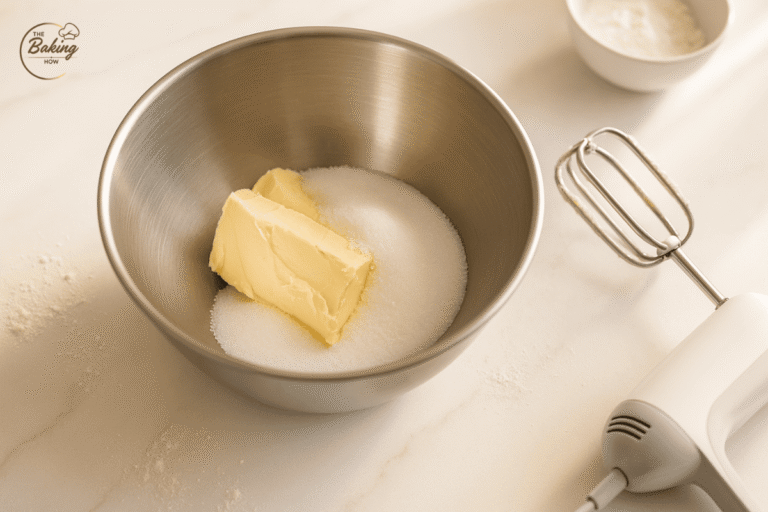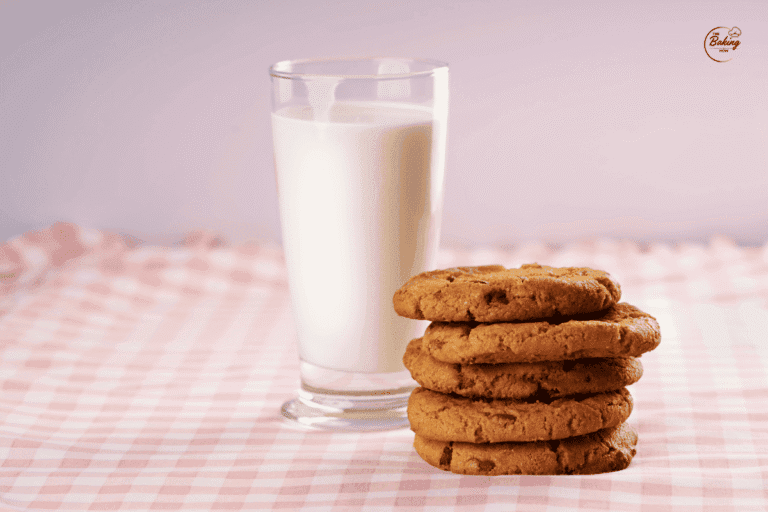Why Are My Cookies Flat? (Expert Tips to Fix and Prevent Spread)

Have you ever started baking cookies, only to open the oven and wonder, “Why are my cookies flat?” Don’t worry — you’re not alone! As someone with 17 years of professional baking experience, I’ve seen this issue countless times in the industry.
Flat cookies usually happen because of a few key factors: incorrect ingredient ratios, butter at the wrong temperature, using the wrong leavening agent, mixing mistakes, or improper baking time and temperature.
The good news? Once you identify the root cause, fixing flat cookies is easy. In this guide, I’ll walk you through why cookies spread too much and share my expert fixes for perfectly shaped cookies every time.
💡 By the way, we’ve also written about common cookie baking mistakes that you might find helpful to avoid similar issues in the future.
🥣 Common Causes of Flat Cookies
Flat, overly spread cookies are a common frustration for bakers. The main culprits? Ingredient ratios, leavening agents, mixing techniques, and baking time and temperature. Let’s break these down to help you understand why your cookies lose their shape.
🥄 Ingredient Ratio
The texture, shape, and taste of cookies depend heavily on the quality and ratio of ingredients in the recipe. If you use too many liquid ingredients like eggs or an excessive amount of sugar and butter, your cookies are more likely to spread.
🍳 Eggs: While they add richness, too many eggs can make the dough overly soft and reduce structure, leading to thin, flat cookies.
🍬 Sugar: Excess sugar melts during baking, causing the dough to spread too quickly. (Learn more about how basic cookie ingredients affect texture.)
🧈 Butter: Too much butter also contributes to spreading, leaving cookies flat instead of thick and chewy.
💡 Industry Insight:
In commercial baking, we maintain a balanced ratio of sugar and butter, usually around 50% of the flour weight, and carefully control liquid ingredients to ensure the dough achieves the ideal consistency for holding its shape.

🌡️ Ingredients Temperature
The temperature of your ingredients plays a crucial role in how cookies spread and rise.
🔥 Warm ingredients: Using butter or fat that’s too warm leads to a soft, greasy dough that spreads too quickly in the oven, resulting in flat cookies with little structure.
❄️ Cold ingredients: On the other hand, overly cold eggs, milk, or butter can prevent proper spreading, leaving cookies thick and underbaked in the center.
To avoid flat cookies, chill the dough is most crucial. But for how long and how to chill? The answer depends on your type of cookie, which is why I created an entire guide on how long to chill cookie dough for the best shaped cookies.
💡 Industry Insight:
In factories, we ensure all ingredients are at room temperature before mixing. For example, sugar retains heat after milling, so we mill it 12 hours before production to allow it to cool and avoid excess dough warmth.
🥄 Leavening Agents
After balancing the ingredient ratios and ensuring the correct temperature, the next factor that affects cookie structure is the use of leavening agents.
Leavening agents like baking soda and baking powder help cookies rise and develop structure. But using them incorrectly can result in flat and overly spread cookies.
☝️ Here’s why:
- If your dough already has a high ratio of sugar, butter, and liquid ingredients, adding too much baking soda or baking powder can make things worse. These ingredients already encourage spreading, so the cookies lose their structure and bake up flat.
- Conversely, if you’ve added a larger amount of flour, you may need a slightly higher quantity of leavening agents to prevent dense, heavy cookies.
💡 Pro Tip:
Baking soda is the most commonly used leavening agent for cookies because it reacts with acidic ingredients to create air pockets. Baking powder can also be used in smaller quantities, especially in recipes with high sugar and butter content.
💡 Industry Insight:
In commercial baking, we often rely on ammonium bicarbonate and sodium bicarbonate for consistent lift and texture. However, for home baking, ammonium bicarbonate can be challenging to use because of its rapid action. Stick to baking soda for predictable, even results.
👉 Learn more about ingredient functions in cookies in our guide to basic cookie ingredients.
🌀 Mixing Methods
After getting the ingredient ratios and leavening agents right, the next critical step for achieving perfectly shaped cookies is mastering the mixing method.
When you cream sugar and butter together at high speed, the fat coats the sugar particles. This process traps tiny air bubbles in the mixture, which later expand during baking and help build the texture and structure of your cookies.
⚠️ But here’s the catch:
- If you cream the mixture for too long, those air bubbles may collapse, leading to flat cookies.
- Similarly, overmixing or undermixing at the flour stage can create a dense, rough dough that fails to hold its shape during baking.
💡 Pro Tip:
Always mix ingredients in stages. Cream butter and sugar until light and fluffy, then add liquids before gently folding in the flour. Avoid overworking the dough at this stage to prevent gluten development.
💡 Industry Insight:
In commercial baking, we carefully monitor mixing time and speed at each stage to achieve precise dough consistency. This ensures every batch of cookies comes out with the perfect shape and structure.
👉 Learn more about common mistakes in our guide to cookie baking mistakes.

🌡️ Baking Time and Temperature
Once you’ve prepared your dough with the perfect ingredient ratios and ensured everything is at the right temperature, the final and most critical step in achieving beautifully shaped cookies is baking time and oven temperature.
When cookies are exposed to heat, they go through multiple stages:
- Butter and sugar melt first, causing the dough to spread.
- Gluten starts forming the cookie’s structure.
- Finally, moisture reduction gives the cookies their texture and color.
⚠️ Here’s where many bakers go wrong:
- If you set the oven temperature too high, the butter and sugar will melt too quickly, causing the dough to spread uncontrollably and resulting in flat cookies.
- On the other hand, baking at too low a temperature increases baking time. This can lead to cookies that are dense, thick, and underbaked in the center, lacking the desired light texture.
💡 Industry Insight:
In large-scale production, we use standardized baking times and temperatures for each type of cookie. This consistency ensures perfect structure and texture batch after batch.
👉 Want to understand more about how baking impacts cookie texture? Check out our guide on why do my cookies spread too much.

🥣 Expert Fixes to Prevent Flat Cookies
In the previous section, we explored the main reasons why cookies turn out flat and thin. Now let’s dive into practical solutions that will help you achieve cookies with the perfect height, structure, and texture every time.
✅ 1. Balance Your Ingredients
Use flour, sugar, and butter in the right ratio to avoid excess spreading. For most cookie recipes, aim for flour to make up 45–50% of your total recipe weight.
- Sugar should be around 20%, and fat about 22%.
- If you’re dealing with flat cookies, adjust by reducing sugar or fat by 5% to help the dough hold its shape.
💡 Want to understand ingredient roles better? Read our guide on basic cookie ingredients to learn how each impacts texture and structure.
✅ 2. Chill Your Dough
Refrigerating cookie dough for 30–60 minutes solidifies the fat and slows spreading during baking.
- You can also use cold butter or eggs and sugar at room temperature.
- Aim for a final dough temperature of 26–28°C for best results.
✅ 3. Cream Butter and Sugar Carefully
Over-creaming butter and sugar can collapse the air pockets that help build cookie structure.
- Cream butter and sugar for 2–3 minutes until light and fluffy.
- Add liquid ingredients and mix for another 2–3 minutes, then add flour last and mix at low speed until you get the right dough consistency.
💡 Avoiding over-mixing is key. Check out our tips on cookie baking mistakes to steer clear of this common error.
✅ 4. Bake at the Right Temperature
Preheat your oven fully and bake at 175–190°C for most cookies.
- Avoid starting with an oven that’s too hot; it can melt butter too fast, causing the dough to spread too much.
- Don’t open the oven door too early or repeatedly, as it disrupts the cookie structure during crucial early stages.
✅ 5. Choose the Right Leavening Agent
Leavening agents like baking soda and baking powder help give cookies lift, but too much can break down their structure.
- Use 1 gram of baking soda or powder per 1 kg of flour as a standard guideline.
- When working with high sugar and butter recipes, keep leavening minimal to avoid over-spreading.
💡 For more tools and tips, visit our cookie baking tools for beginners guide to make your process easier.
📊 Quick Reference: Fixing Flat, Puffy, or Chewy Cookies
| Texture Issue | Fix Inspiration |
| Flat Cookies | ↓ Sugar/Fat, Chill Dough, Moderate Oven Temp, Don’t Over-Cream |
| Puffy Cookies | ↑ Sugar/Fat Slightly, Use Fresh Baking Soda, Avoid Overmixing Flour |
| Chewy Cookies | ↑ Brown Sugar, Slightly Longer Bake at Lower Temp, Don’t Overbake |
💡 Learn how ingredient tweaks create different textures in our guide to why are my cookies not chewy.

📝 Final Thoughts:Why Are My Cookies Flat
Flat cookies can be frustrating, but with the right balance of ingredients, mixing, and baking techniques, you can achieve bakery-quality results every time. As I’ve seen in over 17 years of cookie production, it’s often a small adjustment — like chilling dough or tweaking sugar ratios — that makes the biggest difference.
Remember, baking is part science, part art. Start applying these expert tips today and enjoy cookies with perfect shape, texture, and taste.
Learn more about professional tips on cookie dough handling & structure.
❓ FAQs’ Why Are My Cookies Flat
Q1: Why do my cookies always turn out flat and greasy?
Q2: Can I fix cookie dough that spreads too much?
Q3: Why do my cookies puff up too much instead of spreading?
Q4: How do professionals prevent flat cookies?





Lovely just what I was looking for.